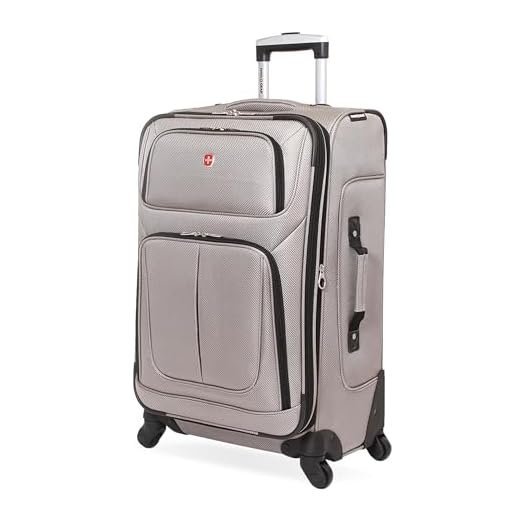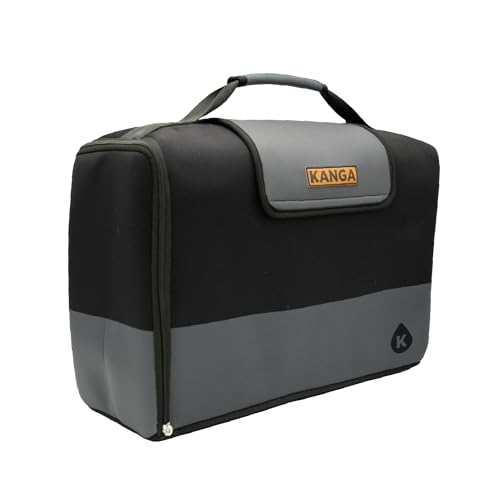



The maximum size for checked baggage typically should not exceed 62 linear inches (157 cm) when adding together the length, width, and height. Airlines often recommend keeping individual dimensions under 27 inches (68.5 cm) in height for compliance with international regulations.
Weight restrictions generally range from 50 to 70 pounds (23 to 32 kg), depending on the airline. Exceeding these limits may incur significant additional fees, so travelers are advised to weigh their suitcases before heading to the airport.
Opt for soft-sided bags that can be compressed slightly to fit into varying spaces, while still adhering to these guidelines. Hard-shell bags can provide superior protection for your belongings but are less flexible in terms of fitting into tight overhead compartments or car trunks if needed.
Always double-check specific airline policies since requirements can vary between carriers and international borders. Keeping up to date on these details can save time and avoid hassle at check-in.
Standard Size Limits Across Major Airlines
Domestic and international carriers typically permit checked baggage measuring up to 62 linear inches (158 cm) in total. This total includes length, width, and height. For example, a common acceptable size could be 27 x 21 x 14 inches (68.5 x 53.5 x 35.5 cm).
United Airlines, British Airways, and Delta Air Lines adhere closely to this standard, while low-cost airlines like Ryanair and Spirit may enforce stricter policies or additional fees for larger pieces. Always verify the exact specifications prior to travel, as variations might occur based on the flight route or ticket class.
Some airlines, such as Emirates and Lufthansa, allow checked bags up to 70 pounds (32 kg) per piece, while others may limit you to 50 pounds (23 kg). It is advisable to measure and weigh luggage before arriving at the airport to avoid unexpected charges.
Frequent flyers should consider enrolling in loyalty programs to enjoy increased baggage allowance. Certain credit cards also offer travel perks including waived fees or additional baggage limits, giving travelers more flexibility.
Using soft-sided bags can be advantageous, as they tend to be more forgiving when it comes to fitting into sizing guides at check-in. Always pack wisely to maximize space and ensure compliance with airline regulations.
Understanding Weight Restrictions and Additional Fees
Maximum weight limit generally ranges from 50 to 70 pounds, depending on the airline’s policy. Exceeding this threshold can result in fees that vary greatly, often from $50 to $200. It’s prudent to check with the specific airline prior to traveling, as some may have stricter regulations.
Many carriers allow one piece of luggage without additional charges, while supplementary bags may incur extra costs. Each airline has its own baggage fee structure, which can include options like prepaid discounts for an early purchase of additional baggage. Monitoring special offers can lead to savings.
For international flights, weight allowances often differ. Some airlines implement a piece concept rather than a weight limit, permitting either a certain number of bags or a total weight across multiple pieces. This can impact packing strategy significantly. Always refer to the airline’s website for precise guidelines related to specific routes.
Utilizing a luggage scale prior to departure helps avoid surprise fees. Ensure all belongings are weighed at home to comply with limits. Keep receipts for any extra fees paid during check-in, as these can sometimes be adjusted or contested if discrepancies occur.
In cases of special items, such as sporting gear or musical instruments, additional fees may apply. Planning ahead and confirming these requirements will prevent inconvenience at the airport. Being aware of your airline’s policies on weight can significantly streamline the travel experience and reduce unexpected expenses.
How to Measure Your Luggage Correctly
Use a soft measuring tape for accuracy. Begin by measuring the height, width, and depth of your bag. Height is measured from the base to the top, width across the widest part, and depth from front to back. Always include wheels and handles in your measurements.
For a rectangular suitcase, add the three dimensions together to determine the total linear measurement. Most airlines have a maximum linear dimension limit, often around 62 inches. Ensure your bag fits these requirements by double-checking each dimension.
Compare measurements with airline specifications, and remember that many allow for slight variations. It’s advisable to pack efficiently, keeping in mind the necessity to meet both size and weight limits.
Invest in a best rolling duffel for traveling that meets airline standards to enhance convenience and mobility, making the travel experience more pleasant.
Regularly review your packing strategy. Consider weighing your suitcase after packing to avoid excess charges. Utilize scales specifically designed for luggage or your bathroom scale can also work as a practical alternative.
Lastly, always keep an eye on luggage regulations and ensure that the measurement is your top priority to evade surprises at the airport.
You may find it interesting how these measurements relate to biology, like which of these organelles folds proteins, showing precision’s importance in various contexts.
Alternatives for Over-Sized Luggage Options
Consider utilizing freight shipping services as a reliable option for those bulky items. This method often provides more space and a better cost-to-weight ratio compared to traditional baggage fees.
- Ship to Destination: Partner with a shipping service to deliver your belongings to your travel location. This choice can simplify your airport experience.
- Excess Baggage Services: Some airlines and third-party services specialize in oversized items, offering tailored solutions for larger suitcases at competitive rates.
- Travel Gear Rental: For sports equipment or specialty items, consider renting instead of transporting. This reduces the need for additional bulk.
For brief trips, utilize soft-sided bags that can be compressed, making them more manageable without causing excess fees. Folding and packing items wisely can also create extra space.
Additionally, trolleys and collapsible bags enable flexibility in transporting larger items with ease. Finally, check out best automatic umbrella singapore for travel-friendly gear that packs away neatly.







